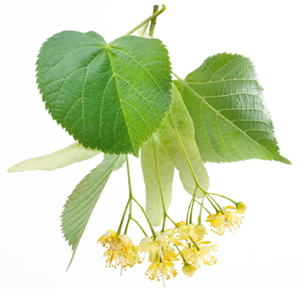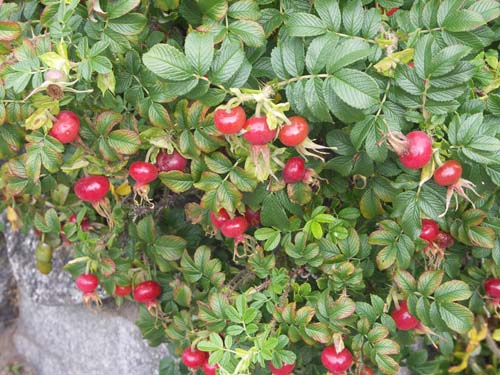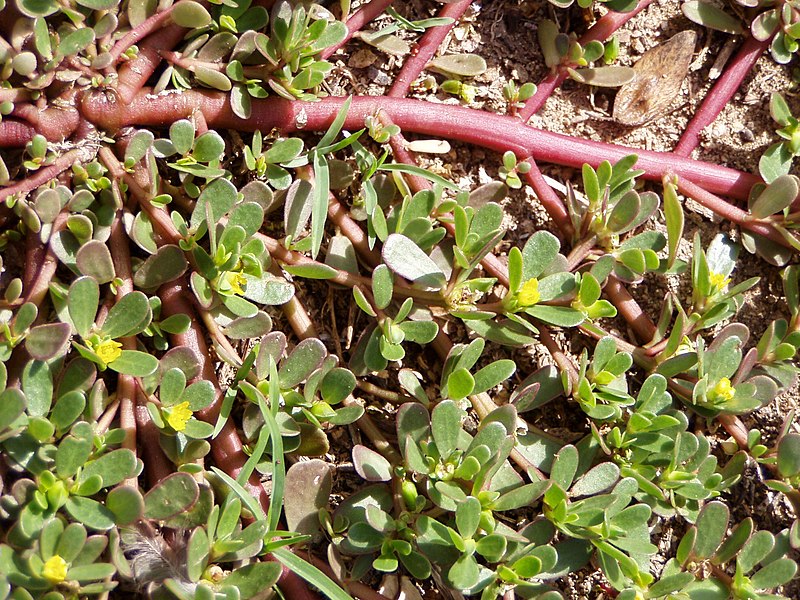Welcome. So other than young Dandelion leaves, what grows outside that you can pick, bring home and include for dinner, and doesn't come from your (or anyone's) garden?
Announcement
Collapse
No announcement yet.
Wild Edible Plants
Collapse
X
-
Re: Wild Edible Plants
Basswood, or Linden Tree (Tilia):

Young leaves, edible from spring to early summer, very abundant. Nice salad green, best eaten raw. Eaten in quantity, has the same mucous-like texture of okra, which can be good to lubricate your vocal tract if you have throat soreness or irritation.

Flowers can be eaten raw, or like my mom did at my first house, collected to make a tea. The flowers have a certain sweetness to them, and a nice mellow taste that is reminiscent of cucumbers.

Or you can wait till the flowers bear their fruit, and eat them just like that.

If you somehow decide to cut off the outer bark, the cambium (or inner bark) is apparently a good source of carbohydrates, I imagine it would taste best after collecting all the pulp and cooking it, I've yet to try the inner bark of a tree.Last edited by jgk3; 06-24-2012, 05:39 PM.
-
Re: Wild Edible Plants
Rose (Rosa):
Nothing says I love you like giving to your tongue and stomach what could have otherwise served as a bouquet of roses to your beloved mother!
Roses are indeed edible, until you spray them with chemicals. So don't think of a florist next time you're hungry, instead, grow your own organically, or eat ones that you are sure haven't been sprayed. And you don't have to eat all of them yourself, you can save some branches to give to your loved ones (if you like, you can remind them that once the flowers start to die, they can chomp them down :P)
_2008_250x250.jpg)
Untreated roses can be dried to make a flavourful tea. Your roses have to be of a sweet or at least non-bitter variety.

These are the classic rosehip bushes you'll find growing randomly in a field, outside a forest, or deliberately planted by your municipality to usher in a pretty pink colour to your streets, parks or beaches during the spring, and a deep red for summer and fall....


These represent the two commonly found varieties (regarding shape, not genus) or the rosehip, or rose berry. They are a killer source of Vitamin C, but it is best to wait till they are fully mature, to develop their sugars well for use as a tasty snack, or to make jam. Harvest only when plump and soft, and uniformly red n'ripe.

I enjoy waiting until the first frost in late fall, as the sugars somehow take on an almost alcoholic-like flavour to them. Their icy texture that melts in your mouth imparts its sweet flavour slowly, makes me appreciate the cold of late fall and early winter
A discussion on seeds from the rose family:
For gastronomic and safe measure, the seeds inside should be treated much the same way we normally treat apple seeds: throw/spit them out. Though they are chewable with some effort, in the case of rosehips they spoil the good taste of the red fruit, and contain cyanide compounds like much the rest of the rose family: Rosaceae (such as apples, apricots, plums, cherries, peaches, pears, raspberries, and strawberries, almonds, and others), which if eaten in too much quantity can make you sick, and if one is determined to commit suicide and ignore the signals of sickness, can lead to death.
A good guideline: eating 60 apple seeds can become life-threatening, so apply this same principle when eating seeds of its cousins. Cyanide is also believed to fight against cancerous cells and tumors, but an overdose will make you seriously ill and thus is not a solution. Let the researchers figure out the exact relationship between cyanide and cancer, but in the meantime, don't be scared if you decided to eat the seeds of your apple, I do it sometimes when I'm too lazy to core my apple, so I just eat it whole, including the stem for extra fiber. I don't always do it, and I think, "Hmmm, well at least it's possibly fighting cancers and tumors from growing in my body", that and one additional fact, of all toxic compounds found in plants, cyanide is among the less potent ones, which is why it takes determination to eat enough to feel sick from it". And I have felt sick from eating too many seeds before from crabapples, I ate maybe 20 of the fruits with some 6-8 seeds in each, in a brief period of time. It takes a lot to reach that point. Be more wary with stone fruits (apricots, peaches) though, each seed contains much more cyanide than an individual seed of an apple or rosehip, many people seriously intoxicate themselves by consuming a few of these to "fight cancer".Last edited by jgk3; 05-28-2012, 06:57 PM.
Comment
-
Re: Wild Edible Plants
I'm sure many Armenians are familiar with Purslane. I have seen this grow wild and it's considered a weed in North America.
Purslane aka Semizotu (Turkish)

Purslane contains more omega-3 fatty acids (alpha-linolenic acid in particular[4]) than any other leafy vegetable plant. Research published by Simopoulos states that Purslane has 0.01 mg/g of eicosapentaenoic acid (EPA). This is an extraordinary amount of EPA for a land-based vegetable source. EPA is an Omega-3 fatty acid found mostly in fish, some algae, and flax seeds.[5] It also contains vitamins (mainly vitamin A, vitamin C, and some vitamin B and carotenoids), as well as dietary minerals, such as magnesium, calcium, potassium, and iron. Also present are two types of betalain alkaloid pigments, the reddish betacyanins (visible in the coloration of the stems) and the yellow betaxanthins (noticeable in the flowers and in the slight yellowish cast of the leaves). Both of these pigment types are potent antioxidants and have been found to have antimutagenic properties in laboratory studies.[6]
http://en.wikipedia.org/wiki/Portulaca_oleracea
These taste great in salads.
 Last edited by KanadaHye; 05-23-2012, 04:53 PM."Nobody can give you freedom. Nobody can give you equality or justice or anything. If you're a man, you take it." ~Malcolm X
Last edited by KanadaHye; 05-23-2012, 04:53 PM."Nobody can give you freedom. Nobody can give you equality or justice or anything. If you're a man, you take it." ~Malcolm X
Comment
-
Re: Wild Edible Plants
Both enjoy and appreciate this thread, thanx.
Much of what is sold in American grocery stores these days represents corporate interests more than it represents food.
About a year after we get fires up here(Alaska)the morel mushrooms bloom.
The local store sells them(dry)for over 400 dollars per pound.
I picked 10 pounds(dry) which is a 100 pounds fresh. Yeah!
Not computer smart so can't send pictures but they look different and taste like the fiest steak.
They are related to the truffle and no one has figured out how to cultivate them.
(many false claims/don't believe .
Again thanks for thread and please keep knowledge info. And sharing alive.
Artashes
Comment
-
Re: Wild Edible Plants
Great input guys! I'm pleased to see this thread growing. I'll be adding more soon. Btw, purslane grows great in gardens, let them grow as weeds if they're present, and then harvest them for a salad.
Artashes, you can post pictures using google, saving the url of the image, and inputting it using our image feature on the forums. Morels should be fun to read up on, so give it a shot
Comment






Comment